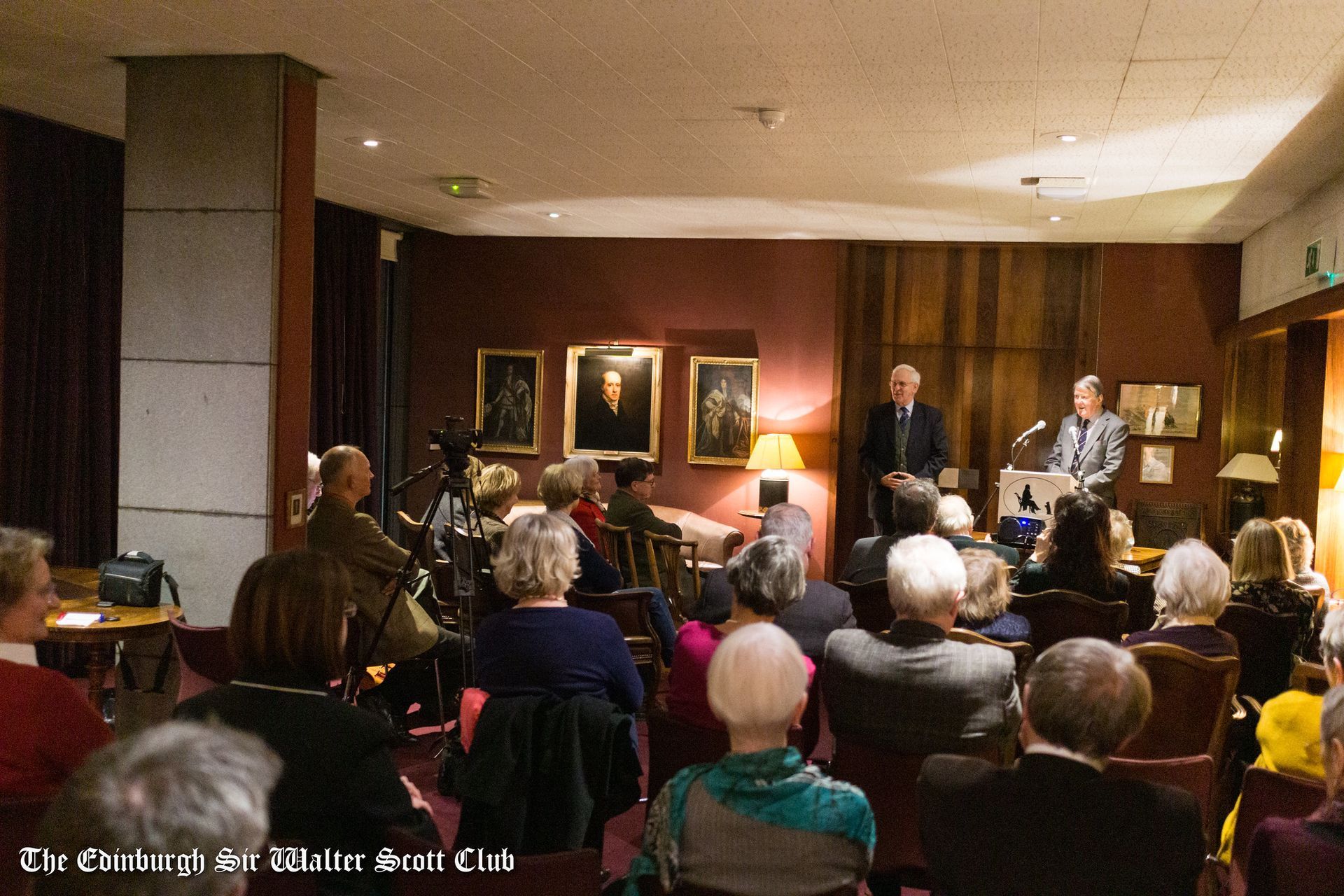Scott, Newman and Abbotsford
Thursday 14th April 2011
Summary of the Talk:
This lecture explores the unexpected connection between Sir Walter Scott and John Henry Newman, two of the most influential figures of the 19th century, despite never having met. It discusses their intellectual and spiritual journeys, their shared appreciation of history, and their impact on literature and religious thought.
1. The Connection Through Abbotsford
- Pope Benedict XVI’s 2010 visit to Britain highlighted an unusual link between Newman and Abbotsford, Scott’s home.
- In 1872, Newman gifted a set of vestments to Mary Monica Hope Scott, Scott’s great-granddaughter, symbolizing a final intertwining of their legacies.
- Abbotsford had become a literary pilgrimage site, much like Yasnaya Polyana (Tolstoy’s home).
2. Scott’s Influence on Newman
- Scott was born in 1771, 30 years before Newman (b. 1801).
- Newman was deeply influenced by Scott’s early poetry, such as The Lay of the Last Minstrel, Marmion, and The Lady of the Lake.
- Scott’s historical novels, particularly Waverley, Ivanhoe, Old Mortality, and The Heart of Midlothian, shaped Newman’s literary imagination.
3. Scott and Newman’s Diverging Lives
- Scott, a Presbyterian turned Episcopalian, was a historian and novelist immersed in Scottish folklore and medieval Catholic themes.
- Newman, originally a Low Church Anglican, became an intellectual and theologian, later converting to Roman Catholicism.
- Scott built Abbotsford, embedding it in the historical landscape of the Scottish Borders, while Newman’s intellectual home was Oxford, where he led the Oxford Movement.
4. Financial and Religious Crises
- Scott faced financial ruin in 1825 but heroically wrote prolifically to pay off his debts, producing five novels, The Life of Napoleon Bonaparte, and other works.
- Newman faced intellectual and religious turmoil. As a leader of the Oxford Movement, he sought to restore Catholic traditions within Anglicanism, eventually converting in 1845.
- Both resisted modernity: Scott opposed the 1832 Reform Act, fearing societal decay, while Newman feared liberalism’s effect on Christianity.
5. Mediterranean Journeys: A Strange Parallel
- In the 1830s, both men separately visited Malta, Naples, and Rome for health reasons.
- Scott, despite illness, was a curious and sociable traveler, fascinated by Malta’s Christian-Moslem history and attempted a novel (The Siege of Malta).
- Newman, more reserved and introspective, suffered illness in Sicily and wrote his famous poem Lead, Kindly Light during a becalmed sea journey.
6. Newman’s Rise and the Hope-Scott Family
- In 1852, Newman visited Abbotsford as a guest of John Hope Scott (Scott’s grandson-in-law), who, with his wife Charlotte, had converted to Catholicism.
- Mary Monica Hope Scott, the recipient of Newman’s vestments, later witnessed Newman’s elevation to Cardinal in 1879.
7. Newman’s Intellectual Legacy
- Apologia Pro Vita Sua (1864) – Newman’s personal theological defense after Charles Kingsley accused him of dishonesty.
- The Dream of Gerontius – A poem later set to music by Edward Elgar.
- The Grammar of Assent (1870) – A philosophical defense of faith.
- University Vision – Newman’s book The Idea of a University (1873) described a holistic education.
8. Conclusion: A Shared Legacy
- Newman admired Scott’s moral vision and historical imagination, seeing him as a precursor to Catholic thought.
- Scott’s integrity and courage in the face of financial ruin paralleled Newman’s spiritual struggles.
- Newman’s definition of a gentleman—one who avoids causing pain and fosters ease—could fittingly describe Scott.
Interesting Points
- Newman’s childhood admiration for Scott’s poetry – He memorized lines from The Lay of the Last Minstrel and Marmion.
- Scott’s bold depiction of Catholicism – At a time when Catholicism was viewed with suspicion, Scott’s novels like The Abbot and The Monastery were surprisingly fair to Catholic clergy.
- Both men’s resistance to change – Scott feared the Reform Act of 1832, while Newman feared liberal theology.
- Their Mediterranean travels – Both visited Malta, Naples, and Rome for health reasons, yet Scott engaged with history, while Newman’s journey was one of spiritual crisis.
- Newman’s emotional reaction to Lockhart’s biography of Scott – He was moved to tears, reinforcing the idea that Scott was a literary and moral guide for him.
- Newman’s famous hymn Lead, Kindly Light – Written in despair while stranded at sea, it became one of the most beloved Christian hymns.
- Newman’s rise to Cardinal despite never being a bishop – A rare honor, granted by Pope Leo XIII.
This lecture highlights two towering figures of 19th-century Britain, their unexpected connections, and their parallel struggles against modernity—one in literature, the other in theology.
Download the [transcript]

Download the [transcript]


